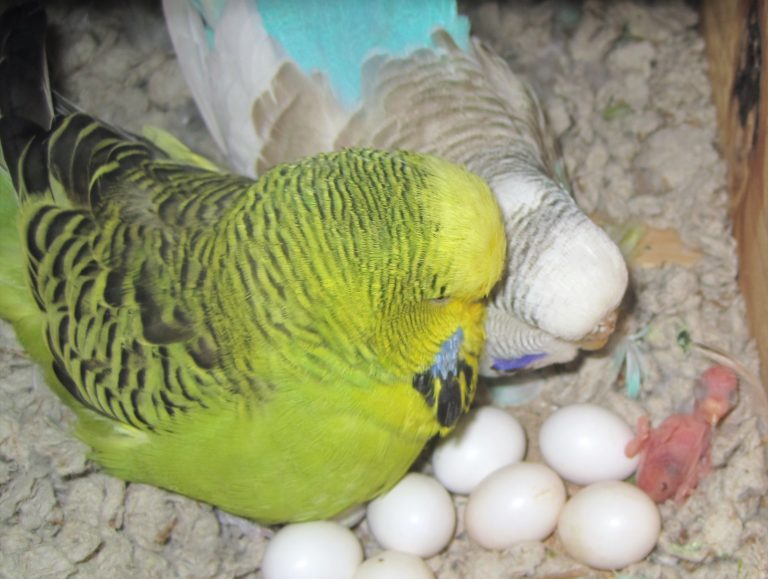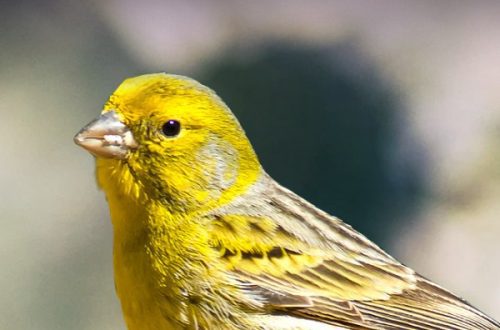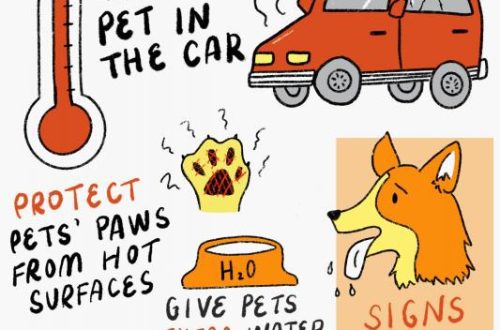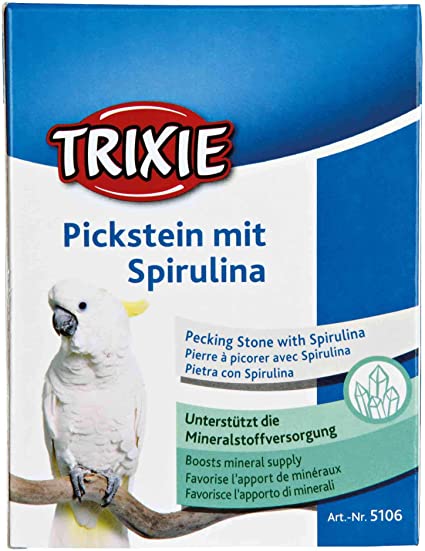
Mineral stone for parrots
For the health of your parrot, mineral supplements are essential. Now there is a wide variety of stones, mineral mixtures, sand and chalk for birds. What you should pay attention to when buying such supplements and why they are for parrots, we will tell in this article.
What should high-quality mineral mixtures contain, what should be the sand and is it possible to make a mineral stone with your own hands?
mineral mix – crushed charcoal, clay, chalk, corals, sea shells, sandstone and oyster shells.
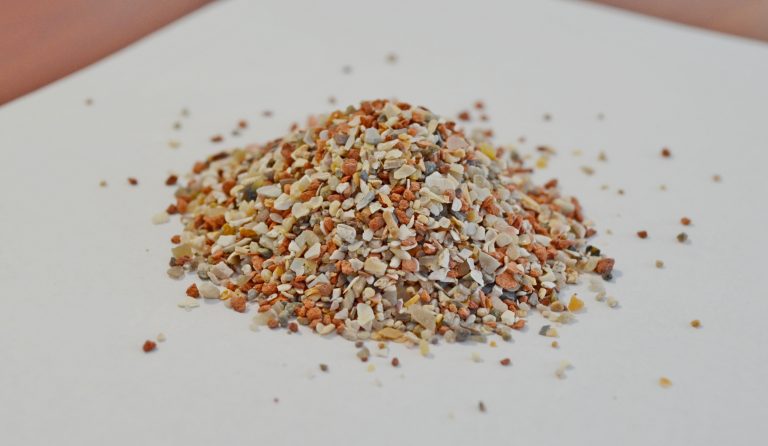
Sand. Mineral organic sand is crushed small shell rock, sea shells, corals, eggshells. Its peculiarity is that it partially or completely dissolves in the bird’s stomach.
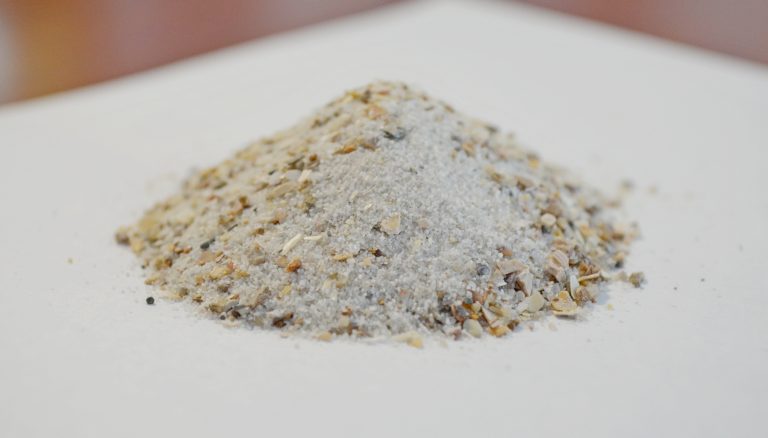
River sand does not dissolve, and it is better not to give it to a parrot, since a goiter clogged with such sand threatens to kill the bird.
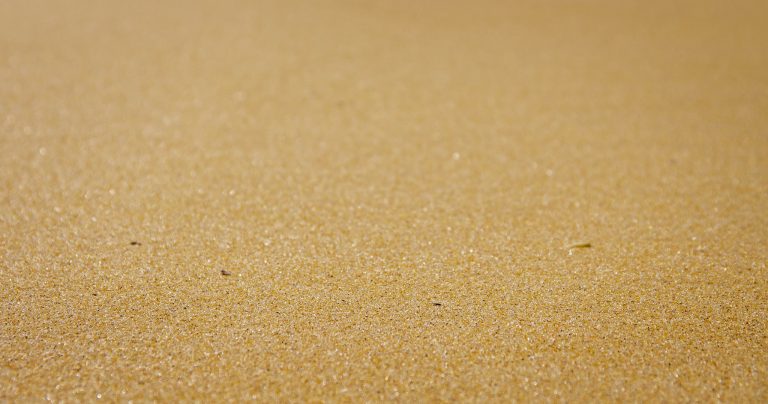
River sand is inorganic sand and it is not safe to give it to parrots!
If, as a result of malnutrition or for some other reason, the parrot has a metabolic disorder and digestive problems, then the bird begins to actively eat even such sand. This is the first signal for the owner that not everything is in order with the health of his pet. Don’t buy non-organic sand for your parrots.
When your parrot is calm about the presence of organic sand in the feeder, does not sit in it all day and does not eat it immensely, then your task is to periodically replace it with fresh (1 time per week is enough). There is no need to remove it completely and give it on schedule.
If you have a budgerigar, 2 teaspoons are enough for one bird, for larger species, respectively, you should increase the rate.
Sepia (cuttlefish shell) – This is the inner part of the mollusk. It is rich in calcium, sodium, magnesium and phosphorus, mild to parrots and easily absorbed by their body. Sepia may exude a slight fishy smell, but it should not be colored (only white, possibly with a yellowish coating), flavored, it should not contain salt, sugar and iodine.
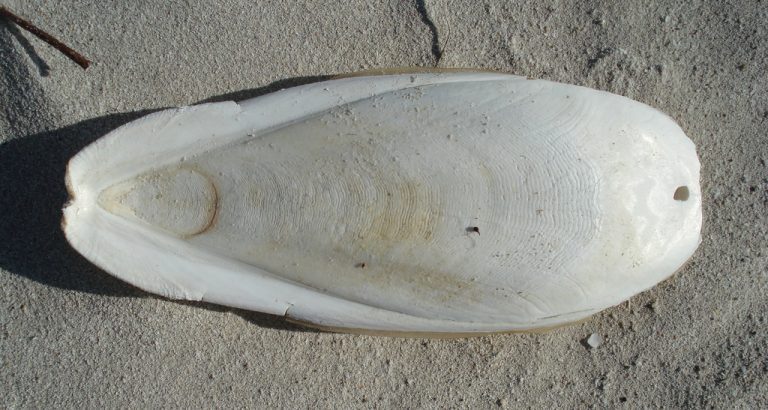
A piece of chalk. On sale you can often find chalk of a wide variety of shapes and colors. It is preferable to buy pure white (some owners break off a small piece for testing, as sometimes chalk comes across with the addition of salt).
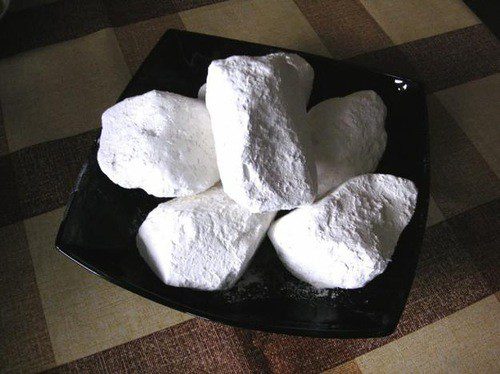
Salty crayons should not be given to parrots!
Mineral block (stone) for parrots – its main purpose: grinding the beak of a parrot, of course, some minerals also go to the bird. But she still takes most of it from other dressings.
Store-bought mineral stones are often brittle, and just for fun, parrots begin to gnaw until they destroy the entire block. As a result: a lot of garbage at the bottom of the cage and around it, and the owner goes to buy a new one. If you bought a brightly colored mineral stone, try to wash off the paint under running water and let the stone dry well.
You could not decide on a suitable mineral block for your bird, or do you just have a flock that grinds stones in large quantities? There is a way out – to make stones with your own hands.
Contents
How to make a mineral stone yourself
Homemade mineral blocks have a number of advantages over factory ones: you know the exact composition of the stone, you are sure that the components are harmless, you can adjust the strength and add grass seeds and grains that your birds especially love. This will help to teach them to sharpen their beak, and if your birds are very fond of chewing on a stone, but are selective in grain supplements, then adding an unloved but healthy grain will increase the chance of it getting into the body of a bird.
First you need to prepare the molds in which you will cast the solution. You can use silicone molds for ice (if you have one or two budgerigars), cupcake liners, plastic cups (if you have a flock of birds or just a medium / large parrot) and twigs. Consider in advance how you will attach the stone to the bars. There are several options: wire, ties, bolts.
You can adjust the composition of the mineral stone mixture itself at your own discretion: gypsum, blue Cambrian clay, chalk, Rio mineral mixture, eggshells, crushed river and sea shells, charcoal.
Mineral Stone Recipe:
- 50 gr building plaster
- 100 gr clay
- 200 gr Rio Mineral Blend
Pour water while stirring until the solution looks like thick sour cream. Pour into molds. Install clamps. The stones should be well dried as fresh ones can be loose, let them dry.
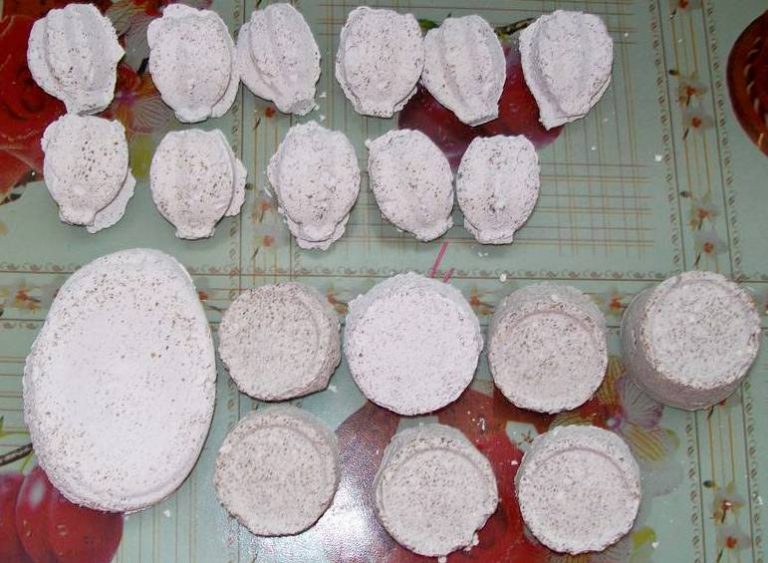
How to prepare an eggshell
The shell should be from an unboiled egg. Having removed the contents from the already washed egg, remove the inner film from the shell (to avoid rotting processes). Dry in the sun, before grinding and adding to the mineral mixture, the shell should be calcined in the oven.
Liquid additives – these drugs that need to be added to the diet of a parrot only in case of illness, only as prescribed by an ornithologist, when you urgently need to make up for calcium deficiency.
In the cage, the parrot must have a feeder for the mineral mixture. Sepia, mineral stone, chalk you place in the corners / walls of the bird house. Sometimes a parrot may not pay attention to these elements if he does not like their location. When you see a bird completely ignoring, for example, sepia, then just look for another place for it.
Cuttlefish shells are often sold with metal clips, ostensibly for ease of installation in the cage. In fact, this is ineffective and dangerous for the parrot. It is best to make two holes in the middle of the sepia and pass through the usual construction screed, which must be fixed to the bars.
The consequences of the lack of mineral supplements in the diet of a parrot
With a deficiency of calcium and phosphorus in birds, parathyroid disease occurs. Excess of these components also entails complications. Chicks in which the thyroid gland did not work properly suffer from brittle bones, beak, growth retardation, and dystrophy. In especially serious cases, with a decrease in the functions of the “thyroid gland”, the chicks died. Therefore, it is important to add all the components of mineral supplements to the diet of “parents”.
Do I need to add charcoal to my parrot’s diet?
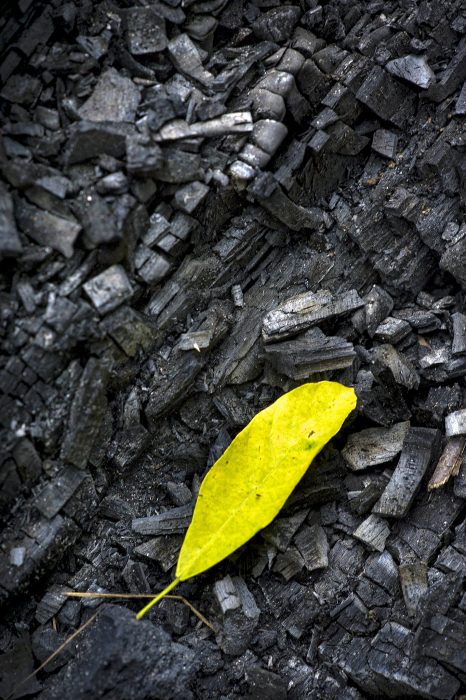
Do not forget that charcoal (activated) is primarily a sorbent and lowers the increased acidity of the stomach. Like a sponge, it absorbs not only toxins, but also useful substances. Charcoal should only be used as directed by a doctor. The percentage of coal that comes across in industrial mineral mixtures does not drastically affect the process of bird digestion.
Do not confuse fillers and mineral sand!
Manufacturers separate these two types of mixtures. The first one is designed for cell hygiene and is poured to the bottom. In addition to sand, fragrance filler may contain anise seeds. This sand parrot can peck from the bottom, and it will not harm him if the cage contains: a special mineral mixture, sepia, stone and chalk. Then the bird will not be carried away by the sand at the bottom of the cage.
If your parrot is not interested in mineral supplements, he may not need them at the moment. In any case, sepia and mineral stone should always be present! When the parrot does not know that they can be eaten / nibbled, then crumble some sepia on an apple / carrot. Explain to the bird that it is edible.
You can’t force a parrot – this is not the main food, but an additive that, if there is a lack of a vitamin, replenishes the bird’s body with the necessary components.
Mineral mixtures should not be offered to chicks – babies can clog their goiter and die.
Important Mineral Supplements
Calcium is the most significant element of the bone tissue of the bird skeleton. To improve the absorption of calcium, the presence of vitamin D in the body is necessary.
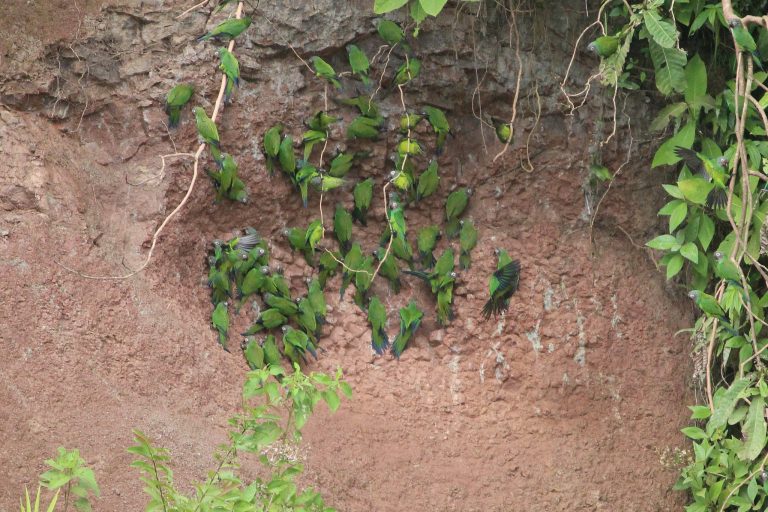
Phosphorus is the second most important component that makes up the bone tissue of a parrot. As in the case of calcium, for better absorption of phosphorus, the presence of vitamin D, which is involved in phosphorus-calcium metabolism, is necessary.
Magnesium, iodine, sodium and chlorine (salt) – the balance of these elements is also important in the body of birds, but you should not introduce such components into the diet of a parrot on your own. With a varied diet, your parrot gets the required amount of these substances.
Only by appointment and under the supervision of an ornithologist, you can enter these supplements.
With an excess / insufficient amount of iodine in the body of a parrot, there is a malfunction of the thyroid gland.
Also, if the parrot has eaten something salty, the amount of salt in the body of the bird rises, which causes an increased release of water from the tissues of the body to lower the salt concentration. All these processes lead to indigestion in the parrot and in the worst cases, dehydration, which is very dangerous for the life of the bird.
The presence of mineral supplements in the parrot’s cage will significantly improve the health of your bird, but carefully monitor their use. In no case do not allow excessive eating of it by a bird.
Only during the breeding season and during molting, the interest in mineral supplements in parrots can increase. At other times birds eat them in moderation.
